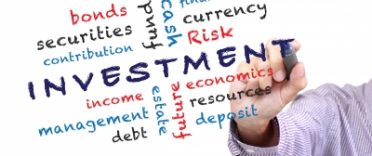 There’s no one single perfect ISA portfolio that exists, but there is a best ISA portfolio for you. To discover what it should look like, you’ll need to think about your own circumstances, your attitude to risk, and what you want your investments to achieve. This guide will walk you through some of the main points to consider when building your perfect ISA portfolio.
There’s no one single perfect ISA portfolio that exists, but there is a best ISA portfolio for you. To discover what it should look like, you’ll need to think about your own circumstances, your attitude to risk, and what you want your investments to achieve. This guide will walk you through some of the main points to consider when building your perfect ISA portfolio.
Deciding your investment objectives
A good first step is to lay out your investment objectives. These will depend partly on your age and how close you are to retirement. For example, if you are aged 60 and nearly ready to retire, you might want to invest to generate a regular income that you can live on. You will also likely want to take less investment risk in order to preserve your capital. If you are aged 30, you will have a longer investment time horizon and might want to invest for capital growth to maximise the size of your ISA portfolio over the long term. You might also be more comfortable with investing in higher-risk assets. This will mean holding a different mix of investments in your stocks and shares ISA. Read our article 'How to set investment goals and timeframes'
Your personal circumstances are important too, as they will affect how much and how often you can put money into your ISA portfolio. Are you likely to be drip-feeding money in each month or will you only invest in lump sums when you get your work bonus, for example? Will you need access to your invested money at any point or can you afford to lock it away for any length of time? How much investment risk do you need to take. Could your objective be achieved if you parked your cash in a fixed-term savings bond for five years without touching it? This would give you a lower but sufficient guaranteed return without taking any investment risk.
Once you have an idea of what you want your portfolio to do, you can then start thinking about the best product to meet these needs. Read our article on the best and cheapest ISA investments to guide you in choosing the most suitable ISA for you, so you can start investing.
Understanding and evaluating your appetite for investment risk
Investments come with an element of risk, as markets can fall as well as rise. Capital losses can be very emotional – research suggests that investors feel a loss much more strongly than they feel the high of a rising investment. In building an ISA portfolio that works for you, you need to be clear about how much volatility you can tolerate.
There are some useful tools available to help you work this out, some are free and some will cost you. Finametrica, for example, is a popular risk profiling tool favoured by professional financial advisers for use with their clients. You can purchase a one-off risk profile assessment for £30 and it will tell you whether your investments are in tune with your risk comfort zone. A free option is to sign up with a robo-advice service like Wealthify, Moneyfarm* or Nutmeg and answer their risk assessment questionnaire to see what sort of model ISA portfolio they would suggest for you on this basis. You don’t have to invest with them, you could just use that information to build your own portfolio with another provider. For further reading, check out our article 'The difference between risk and volatility'.
Understanding different asset classes and the roles they can play in your portfolio
The three main traditional asset classes are equities (also called stocks or shares), bonds (also called fixed income) and cash. There are also alternative asset classes like commercial property and commodities. They each come with a different risk/reward profile and typically behave differently under certain market conditions, so investors can use them to achieve particular purposes within their portfolios. For example, short-dated bonds (meaning those which are maturing soon) can be used if investors are worried about the impact of rising interest rates, gold is often claimed to be a hedge against inflation, or developed market government bonds (for example, 10-year UK gilts or US Treasuries) can be used as a ‘safe-haven’ asset in times of market turbulence.
An investment portfolio for beginners might start off by including the three traditional asset classes. A perfect ISA portfolio will contain a nice balance of all these asset types to help manage risk and improve returns over the longer term. This is the principle of diversification. Read our article 'What is an asset class and what are the different types' for more information.
The importance of investment diversification
In a nutshell, diversification means not putting all your eggs in one basket. It is about spreading risk across a range of assets that are not correlated to each other (ie they don’t move in the same direction) meaning, if markets fall, you shouldn’t see all your investments heading south at once. You can also diversify within each asset class – for example, holding shares in both large and small companies, in companies operating in different sectors like technology or utilities, and in both international and domestic companies.
Diversification is vital for risk management for this reason but, from a return perspective, you are also maximising your chances of positive returns over the long term because every asset class will (probably) eventually have its day in the sun. If you have exposure to a range of different assets (in line with your risk appetite, of course), your portfolio should contain something that’s outperforming, regardless of what’s happening in the economy and the wider market.
How to build a low-risk ISA portfolio
Generally speaking, the more risk you are prepared to take, the better the potential returns, although of course there are caveats to this statement. Equities are generally seen as one of the riskiest asset classes but also the one that will deliver the best long-term returns. So you can adjust the risk level in your portfolio by tweaking your allocation to equities and bonds. If you’re close to retirement or in capital preservation mode for another reason like preparing to buy a property, you might want to be in low-risk assets. You could choose developed market government bonds, property funds, absolute return funds (designed to protect your capital and give you a positive absolute return in a range of market conditions) and limit your exposure to equities. For example, in a low-risk portfolio you might hold up to 35% in equities (nothing racy like emerging market stocks, think blue-chip FTSE 100 names such as HSBC), and the rest in bonds, property and cash.
How to build a medium-risk ISA portfolio
To build a medium-risk portfolio, you might look for a more even split between stocks and bonds, closer to 50/50. You could buy a couple of index trackers to give you low-cost exposure to major markets such as the S&P 500 or the FTSE All-Share. Trackers are passive funds that replicate the performance of an index and are usually cheaper than funds run by a fund manager (called active funds). You could also own an active strategic bond fund, where the fund manager has the flexibility to switch between different parts of the bond market depending on where they see opportunities and risks. Or you could buy a multi-asset fund that itself holds a range of underlying assets. Just make sure you know what it contains and how much risk it is likely to take to make sure it fits in with your objectives.
How to build a high-risk ISA portfolio
A high-risk portfolio might hold 70% or more in equities, including overseas equities from both developed and emerging markets. It might include small or micro-cap stocks, sector or thematic funds focusing on niche industries like robotics or biotech, or alternatives like commodities. It should still contain some bonds for diversification, but these might be high-yield bonds that offer a greater return for more risk and a stronger correlation to equities.
How to build a diversified ISA portfolio
We’ve seen that portfolio diversification is important, but must also beware of becoming too diversified. If you have 50 different holdings in your ISA, you might be spending too much on charges and trading costs for little benefit if you only hold a small amount of money in each. You might end up holding competing investments that are trying to do the same thing, doubling up your exposure. You may also find your portfolio harder to monitor and maintain. Sticking to 8 to 10 positions might be a better strategy to keep things manageable to begin with.
You could also think about buying a ready-made ISA. These model portfolios are offered by many reputable providers in the marketplace (such as Hargreaves Lansdown* or Wealthify), and you can select them based on investment objectives or risk level (although bear in mind there is no universal standard for this so each provider’s risk categories will vary). This could be a good option for novice investors who are unsure about picking their own investments, especially as managers rebalance them regularly to make sure they don’t stray from the pre-set risk parameters.
If you would rather build your own portfolio but are unsure where to start, try our investment calculator which suggests a portfolio mix based on your age and risk appetite. Also, read our article 'How to build a portfolio' which is episode 6 of our 'Grow it' investing series.
If you sign up for a free 30-day trial of Money to the Masses’ 80-20 Investor Service, you can also read this guide to the perfect ISA portfolio. It’s based on research that calculates the ideal asset mix in a portfolio which would have made money every year since 2000.
How to manage your ISA portfolio effectively
Once you have built an ISA portfolio, you shouldn’t just ignore it for the next decade. It should adapt as your circumstances change and, to maintain optimum performance, you will need to adhere to a few core investment principles and practices.
Cost
You probably shop around and compare prices on everything from your weekly shop to your utility bills, so there’s no reason to accept a bad deal on the financial products you hold. In fact, it’s perhaps even more crucial, because extortionate fees can quickly erode any investment gains from your carefully chosen portfolio. Read our guide to ISA pricing.
Number of funds
Yes, you must diversify, but it needs to be sensible. Having too many holdings gets complicated and cumbersome. You could end up with overlap in your portfolio, for example, with the same stocks appearing in a few different funds, and this could mean you lose out on the real benefits of good diversification. How many is too many? There isn’t one definitive number, but single digits probably makes more sense for the novice investor with a modest pot of cash to invest.
Risk
You’ve done all that work figuring out how much risk you should be taking, so now you need to keep an eye on your portfolio to make sure it doesn’t deviate too much from the boundaries you have set. For example, funds can be taken over by new managers and change their investment objectives. If you aren’t paying attention, you could end up invested in something which is now unsuitable, or doubles up on something you already hold. Or maybe you own what was a sensible, boring stock, and the new CEO has decided to refocus the business entirely on cryptocurrencies. Yes, this is an extreme example, but it goes to show you need to keep your eye on the ball to make sure what you hold still meets the investment case you saw when you bought it.
How you will invest?
This will depend on your means and circumstances, but think about how you plan to top up your portfolio. It is generally accepted that drip-feeding money into the market regularly over time is a better strategy than putting in lump sums sporadically. This is because it smooths returns over time and makes you less exposed to the market’s peaks and troughs. Most ISA providers will let you set up regular savings plans so you can manage this automatically.
How you will trade?
The flip side of this is how you will sell or convert positions. Ideally, you will want to avoid being out of the market for long periods as you could miss out on valuable upswings if your timing is off (see below for why you shouldn’t try to time the market). To prevent this, avoid making wholesale switches out of your entire portfolio or large single positions. Drip feed money out gradually when you want to sell or switch, as long as this won’t incur charges.
Your investment approach
The best investors are those that can remove the emotion from the investing process. They ride out market dips with patience and stoicism, buying more of their highest conviction stocks (based on the homework they did before they invested) when prices fall. Trying to time the market is a common mistake novice investors make. It’s a losing game, so try to keep a calm head on your shoulders and don’t panic sell at the first sign of volatility in the markets. Sticking to a process for reviewing your portfolio in order to optimise returns separates successful investors from unsuccessful ones. My 80-20 Investor service is a prime example. It uses a unique algorithm and research to identify the best funds to invest in. It analyses thousands of unit trusts, investment trusts and ETFs to produce a shortlist of funds that should be available to buy on your chosen platform. Since launch, the portfolio has performed better than the market, passive investment strategies and 90% of professional fund managers. You can start a free 30-day trial or find out more here.
Keep learning
Understanding how investment markets work can help provide clarity and give you the confidence to make your own investment decisions. Check out my Damien's Market Update Youtube playlist for a monthly summary of what is happening in investment markets and what to look out for in the days and weeks ahead. Additionally, you may want to check out the Money to the Masses podcast which covers a broad range of investing topics.
Ask for help
If you are still unsure, you could join the Money to the Masses Facebook community group where you can ask questions and have them answered by one of the dedicated community members. It is a friendly community of like-minded individuals, happy to share knowledge on a variety of finance-related topics.
If a link has an * beside it this means that it is an affiliated link. If you go via the link Money to the Masses may receive a small fee which helps keep Money to the Masses free to use. The following link can be used if you do not wish to help Money to the Masses or take advantage of any exclusive offers - Hargreaves Lansdown, Moneyfarm




